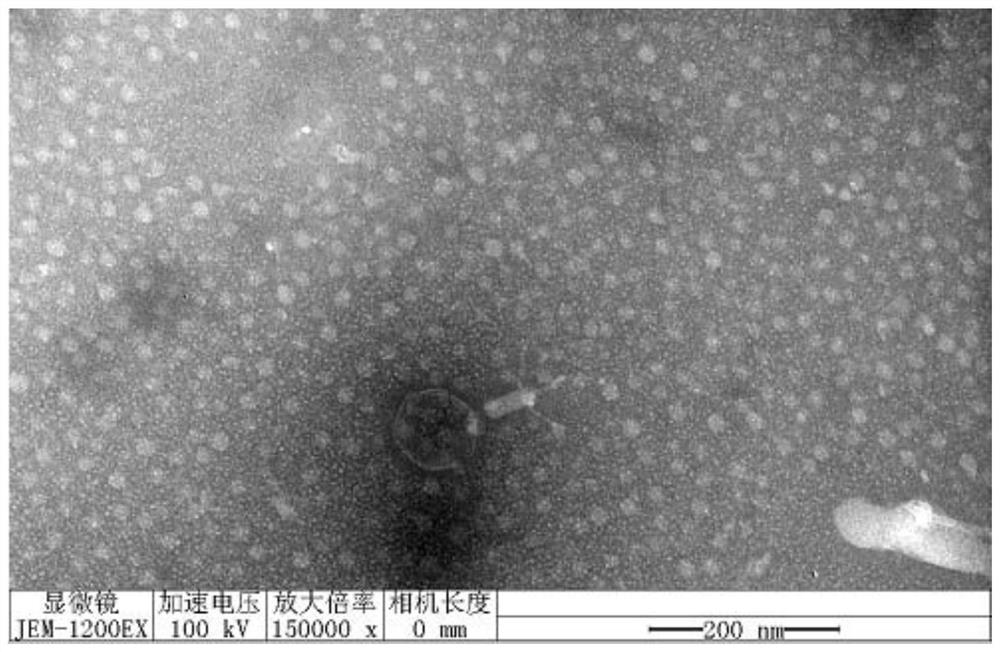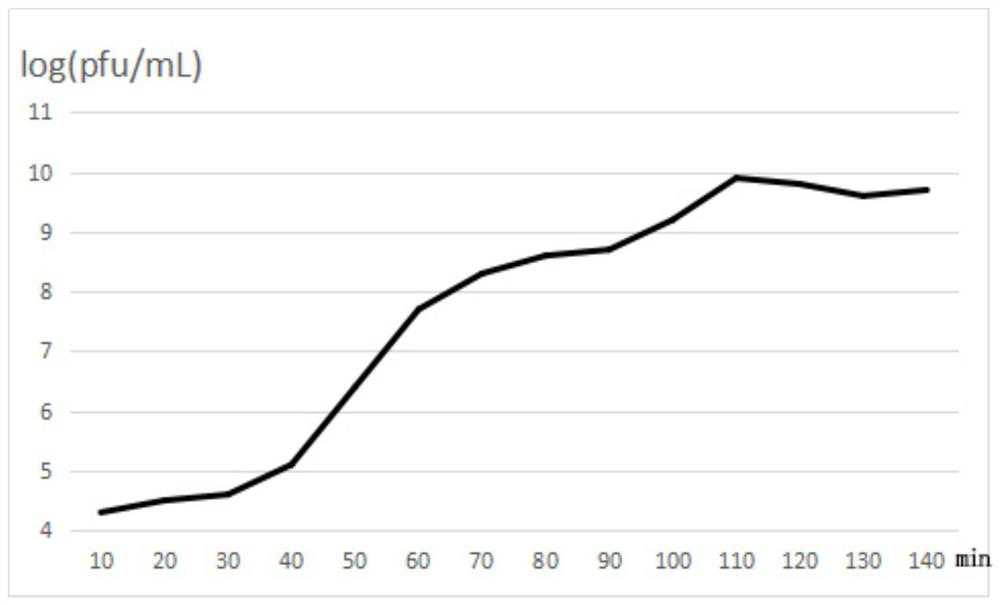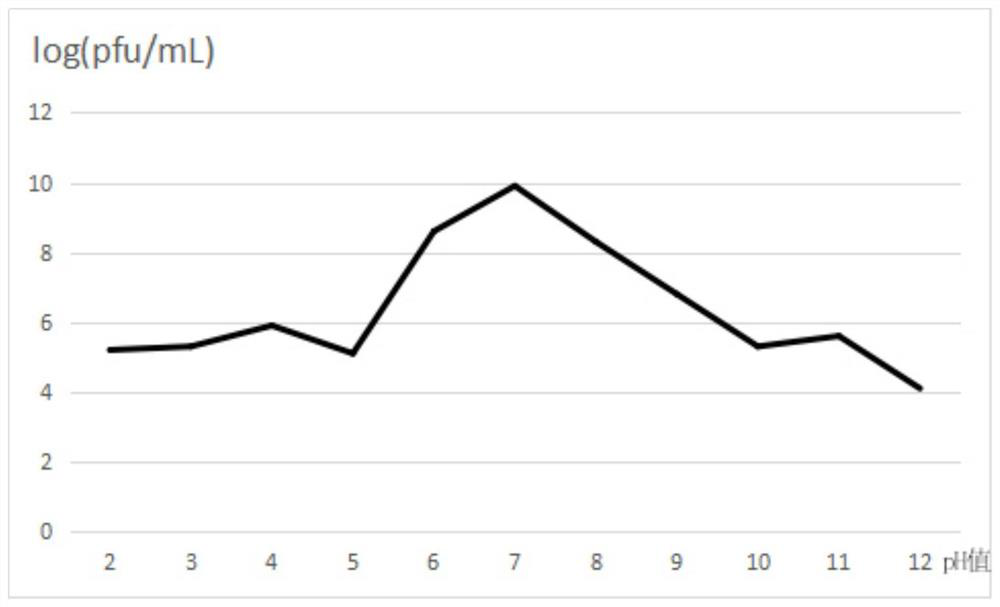Lytic klebsiella pneumoniae bacteriophage RDP-KP-20005 and application thereof
A technology of RDP-KP-20005 and BK-20005, which is applied in the direction of phage, virus/phage, and medical raw materials derived from virus/phage, can solve the problems of bacterial resistance, untimely treatment, and ineffective medication, etc. High price, good control effect and good application prospect
- Summary
- Abstract
- Description
- Claims
- Application Information
AI Technical Summary
Problems solved by technology
Method used
Image
Examples
Embodiment 1
[0028] Isolation and preservation of embodiment 1 Klebsiella pneumoniae BK-20005
[0029] The host was sampled from a farm in Tianheng, Jimo, Qingdao, and the diseased chicken liver was taken aseptically, and the chromogenic medium for localization of urethral flora of France was used to isolate the bacteria by streaking. After culturing at 37°C for 18-24 hours, metallic blue colonies with red halos appeared on the culture medium. Pick typical colonies and continue to streak and purify for 3 times, then pick a single colony and inoculate it in 5mL LB broth, 37 Cultivate with shaking at 200rpm for 8 hours to obtain a uniform turbid bacterial suspension. Klebsiella pneumoniae is a Gram-negative bacillus (0.5-0.8μm×1-2μm), without spores, without flagella, oval and short rod-shaped .
[0030] The isolated bacteria were inoculated in various biochemical test media, cultured at 37°C for 24 to 96 hours, and the biochemical reaction results were observed. The biochemical results sho...
Embodiment 2
[0033] Example 2 Isolation and identification of bacteriophage RDP-KP-20005
[0034] (1) The sewage sample used in the test of the present invention is collected from the surrounding sewage of the diseased farm, and is used as a water sample for bacteriophage isolation.
[0035] (2) Separation: Take 10 milliliters of sewage, centrifuge at 10,000 rpm for 5 minutes, remove larger impurities and most of the bacteria, and then use a 0.22 micron microporous membrane to filter and sterilize. Take 3 milliliters of the filtrate and 3 milliliters of the host bacterial suspension, add them together into 20 milliliters of autoclaved LB broth, and then place them in a 37°C incubator for overnight culture. After culturing, take 5 ml, centrifuge at 10,000 rpm for 5 minutes, and then filter and sterilize with a 0.22 micron microporous filter. The filtrate is the stock solution intended to contain phage. Then, the phages were identified using the double-plate method.
[0036] (3) Purificati...
Embodiment 3
[0038] Electron microscope observation of embodiment 3 phage
[0039] Using phosphotungstic acid negative staining method: drop phage liquid (titer 10 10 pfu / m L) 100 μL, place the membrane side of the copper mesh on the phage droplet, take it off after 10 minutes, and let it dry naturally in the air for 2-3 minutes. Then drop a drop of 2% phosphotungstic acid (PTA) aqueous solution on the copper grid for staining, take it off after 10 minutes, dry it in the air for 10-15 minutes, observe with an electron microscope, and select a clear phage image to take pictures.
[0040] Such as figure 1 As shown, the head of bacteriophage RDP-KP-20005 is icosahedral, with a length of 92.281nm and three-dimensional symmetry, and a short tail with a tail length of 107.442nm. It belongs to the Brachyphage family of the tailed bacteriophage order.
PUM
| Property | Measurement | Unit |
|---|---|---|
| length | aaaaa | aaaaa |
| length | aaaaa | aaaaa |
Abstract
Description
Claims
Application Information
 Login to View More
Login to View More - R&D
- Intellectual Property
- Life Sciences
- Materials
- Tech Scout
- Unparalleled Data Quality
- Higher Quality Content
- 60% Fewer Hallucinations
Browse by: Latest US Patents, China's latest patents, Technical Efficacy Thesaurus, Application Domain, Technology Topic, Popular Technical Reports.
© 2025 PatSnap. All rights reserved.Legal|Privacy policy|Modern Slavery Act Transparency Statement|Sitemap|About US| Contact US: help@patsnap.com



